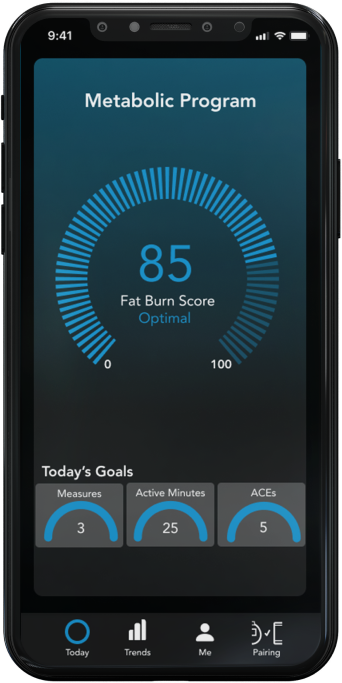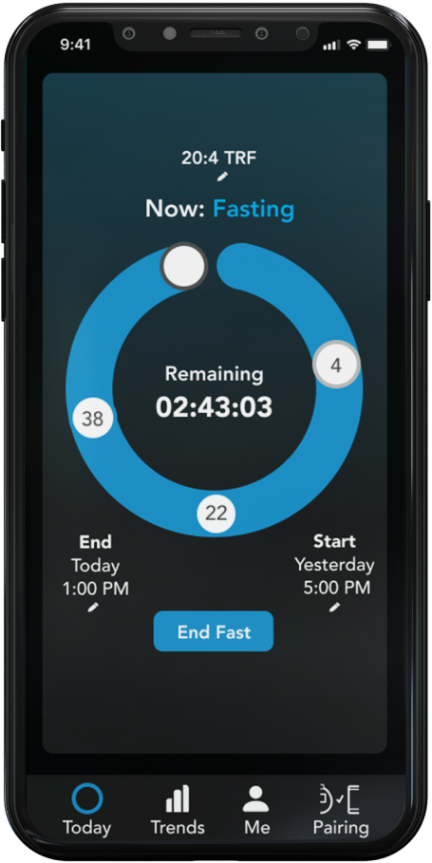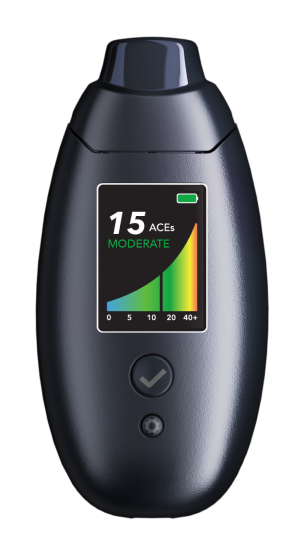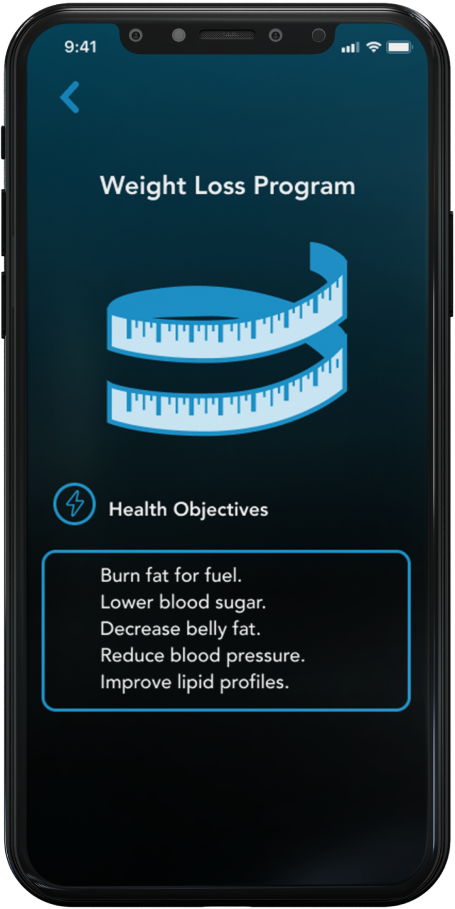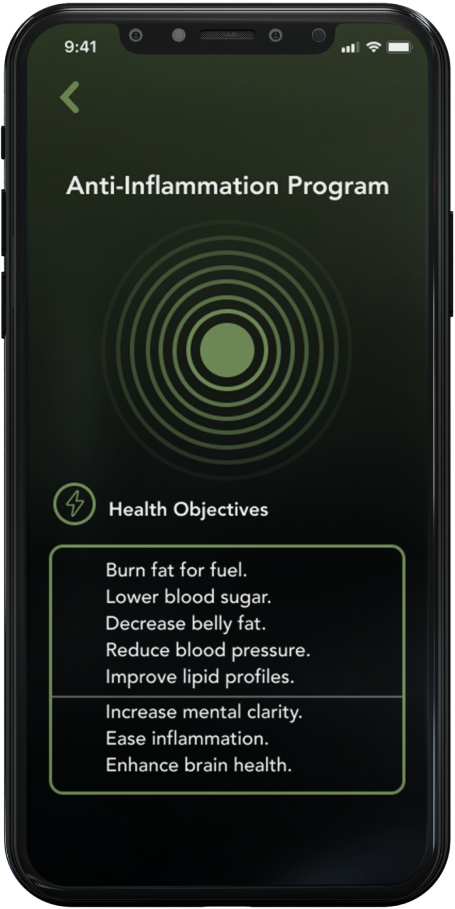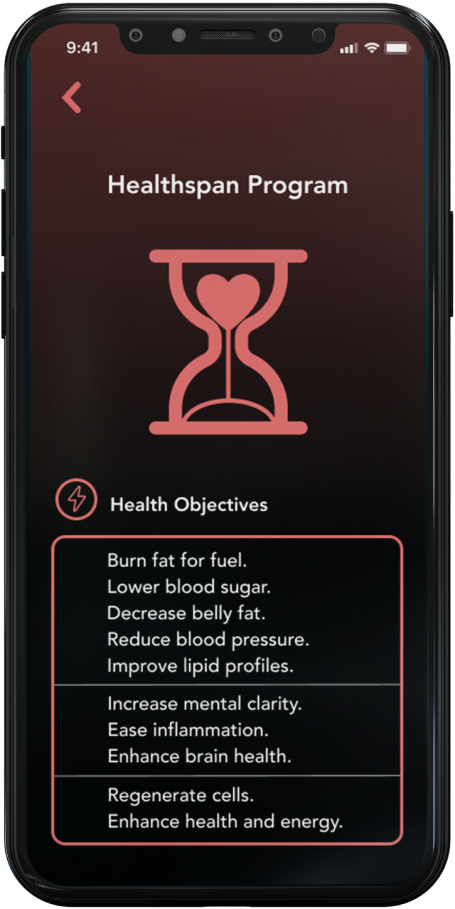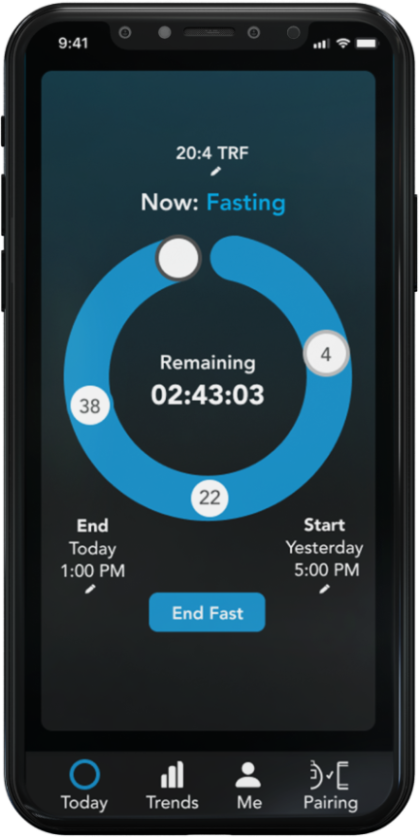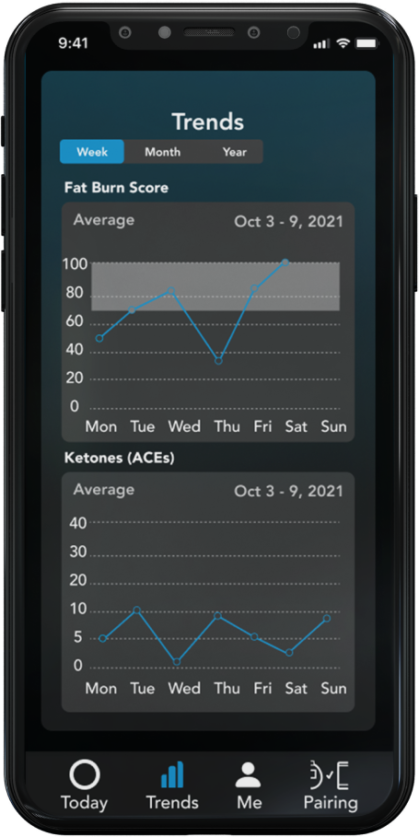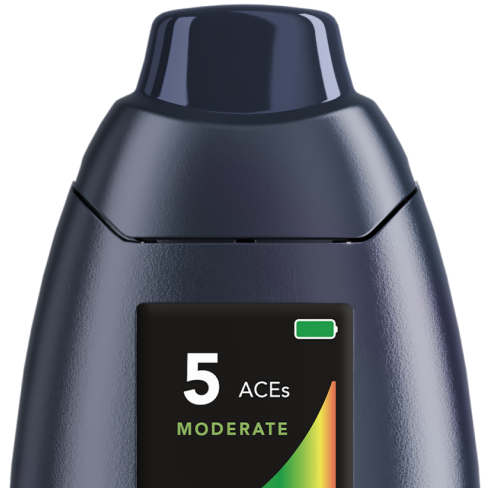Achieve Your Health Goals
Real-time biofeedback to help you discover what your body needs.
Build Healthy Habits
Habits are formed by repetition.
The more you do, the more you sustain.
Active Time + Ketone Levels
Daily Goals = Habit Change
Fat Burn Monitoring, Perfected
Biosense® delivers accurate breath ketone data using a unique deep lung air sampling technique to measure across a broad range of ketone levels (ACEs). It is the only breath monitor with clinical data that shows a high correlation with blood ketones throughout a full day.

Biosense® lets you measure your ketones without having to prick your fingers. Using only your breath, you can accurately track how your ketone levels shift without the pain, hassle, and expense of blood ketone tests.

Biosense® is a small, portable handheld device that can be used conveniently on your schedule. With a few simple breaths, you will discover the depth and duration of your fat burn.
Biosense® delivers accurate breath ketone data using a unique deep lung air sampling technique to measure across a broad range of ketone levels (ACEs). It is the only breath monitor with clinical data that shows a high correlation with blood ketones throughout a full day.
Reach Your Potential
Feel better by tracking your fat burn.
ACEs
See your real time metabolic response after you sleep, eat, fast, and exercise
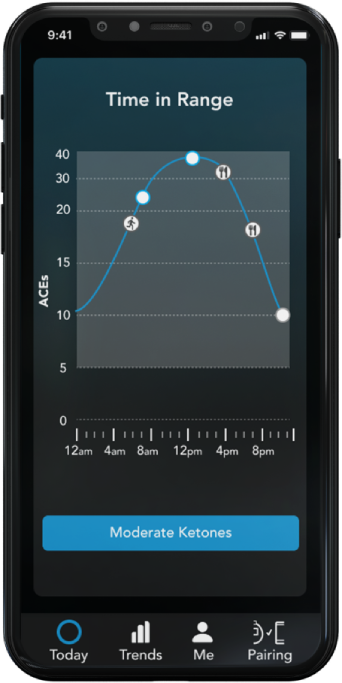
Fasting Clock
Monitor your body’s increasing ketosis levels to optimize your fast.

Trends
Track your data over time and visualize your progress.
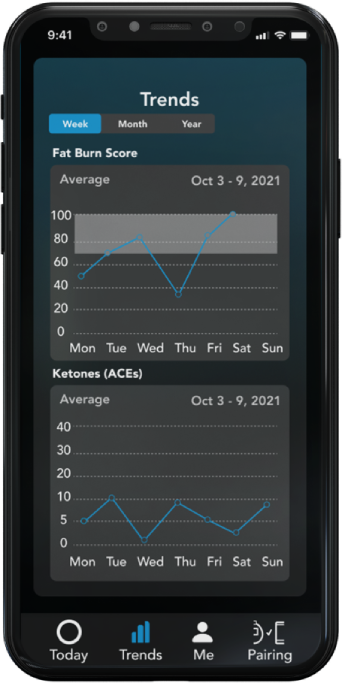
See your real time metabolic response after you sleep, eat, fast, and exercise.
Monitor your body’s increasing ketosis levels to optimize your fast.
Track your data over time and visualize your progress.

